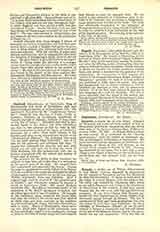

Ceolwulf (CEOLWULPH or CEOLULPH), King of Northumbria and monk of Lindisfarne, date and place of birth not known; d. at Lindisfarne, 764. His ancestry is thus given by the “Anglo-Saxon Chronicle”: “Ceolwulf was the son of Cutha, Cutha of Cuthwin, Cuthwin of Leoldwald, Leoldwald of Egwald, Egwald of Aldhelm, Aldhelm of Ocga, Ocga of Ida, Ida of Eoppa.” Harpsfeld says that he succeeded Osred on the throne, but most authorities say that he was adopted as heir by Osric in 729. Learned and pious, he lacked the vigour and authority necessary for a ruler. Bede bears witness to his learning and piety in the introductory chapter of his “Ecclesiastical History“. He dedicated this work “to the most glorious King Ceolwulph”, sent it to him for his approval, and addresses him thus: “I cannot but commend the sincerity and zeal, with which you not only give ear to hear the words of Holy Scripture, but also industriously take care to become acquainted with the actions and sayings of former men of renown.”
His unfitness for his duties as king prompted his subjects to seize him and confine him in a monastery in the second year of his reign. He escaped from this confinement and reascended the throne. During his reign he appointed his cousin Egbert to be Bishop of York, and Bede tells us that the ecclesiastical affairs of his kingdom were presided over by the four bishops, Wilfrid, Ethelwald, Acca, and Pecthelm. After a reign of eight years he wearied of “the splendid cares of royalty”, and voluntarily resigned to become a monk at Lindisfarne (738). His cousin Eadbert succeeded him. Ranulphus Cestrensis speaks of his retirement to St. Bede‘s monastery of Jarrow, but all others agree that it was Lindisfarne. He brought to the monastery many treasures and much land, and after his entrance the monks were first allowed to drink wine and beer, contrary to the tradition handed down from St. Aidan, who only allowed them milk or water. Henry of Huntingdon, when entering into detail with regard to his retirement, says he was principally urged to it by reading the writings of Bede on the lives of former kings who had resigned their thrones to enter the monastic state. He was buried in the cathedral of Lindisfarne next to the tomb of St. Cuthbert, and, according to Malmesbury, many miracles were wrought at his tomb. The body was afterwards transferred to the mainland of Northumberland, probably along with St. Cuthbert’s, in order to preserve it from desecration at the time of the Danish invasion. His feast day in the calendar is the 15th of January.
G. E. HIND

